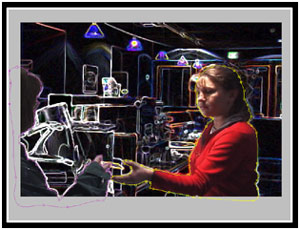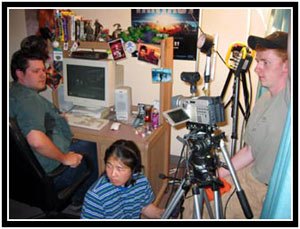Once Upon a Time on a Dark and Stormy Night
 The video club of which I’m a part has been working lately on finishing some of our first-year projects. One of them, entitled Once Upon a Time on a Dark and Stormy Night, is worth mentioning simply because I’ve invested such a large amount of time in it recently.
The video club of which I’m a part has been working lately on finishing some of our first-year projects. One of them, entitled Once Upon a Time on a Dark and Stormy Night, is worth mentioning simply because I’ve invested such a large amount of time in it recently.
In our first year, we adopted a certain operation for our club. Each month, a new member would step up and offer up their own idea for a project. That person would often take on the role of writer/director and the group would rally around them and offer whatever help they could on the day of the shoot. Other responsibilities, especially those that require work outside of shoot dates, would invariably arise, but essentially, participation for most people would amount to an evening planning meeting and a daylong production schedule.
Every project will also have the typical post-production editing, audio, and music related tasks associated with it. What makes Once Upon a Time on a Dark and Stormy Night different is the amount of time we’re putting into extra effects.
Amelia Jenkins is the proud owner of Once Upon a Time on a Dark and Stormy Night and from the beginning she visualized it as animated. We discussed doing stop-frame animation, claymation, and the like, but ended up discarding those ideas because we suspected that they would be too time consuming. I suggested that we plan a normal shoot and use a combination of digital effects in post-production to achieve the animated look-and-feel she was after. Although I haven’t seen the movie Waking Life, I did read up online about how the director supervised the post-processing of the film. I was confident that, after the shoot was behind us, we could find something that would work.

 Saturday, June 7th, 2003 was a very interesting day.
Saturday, June 7th, 2003 was a very interesting day.